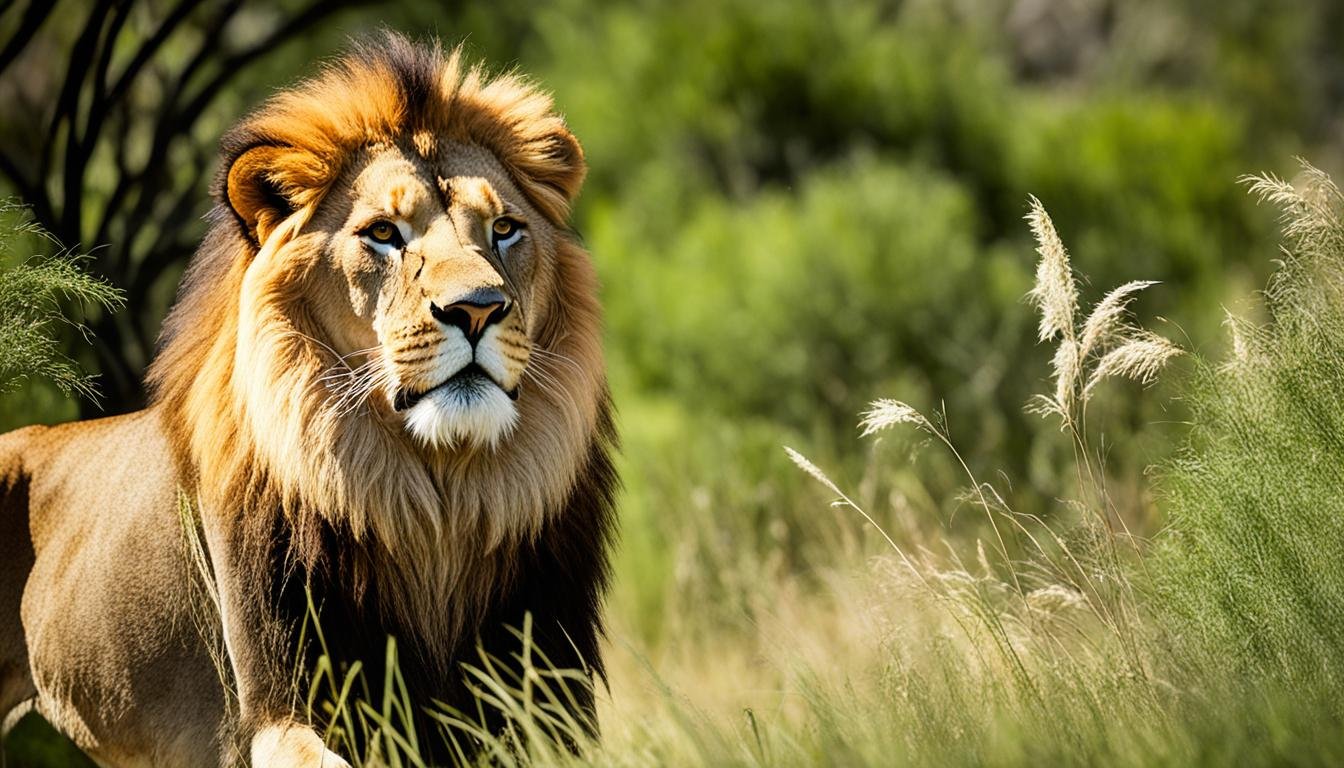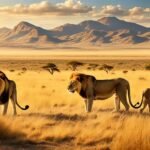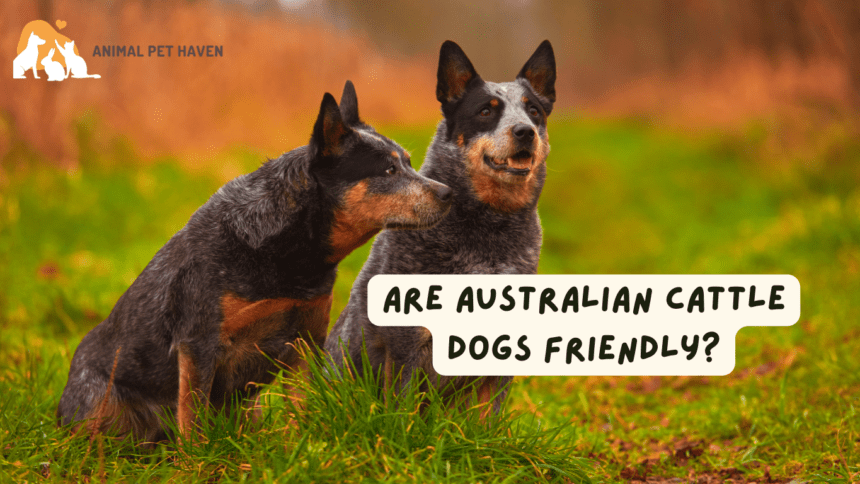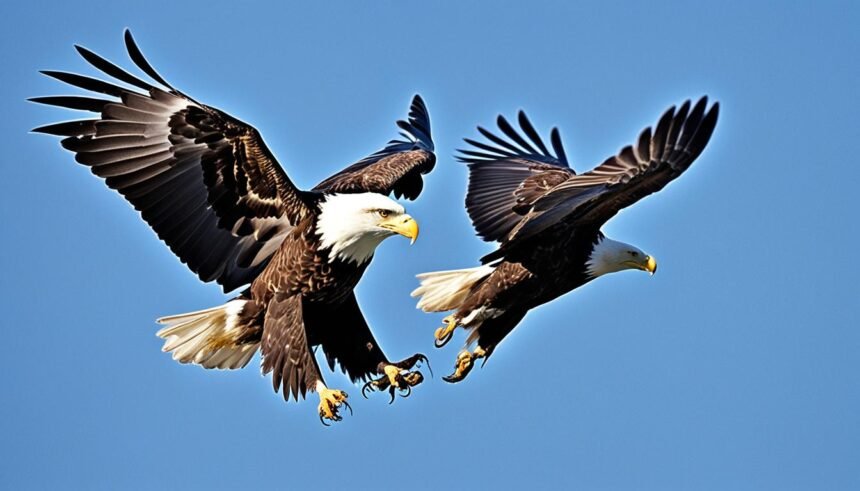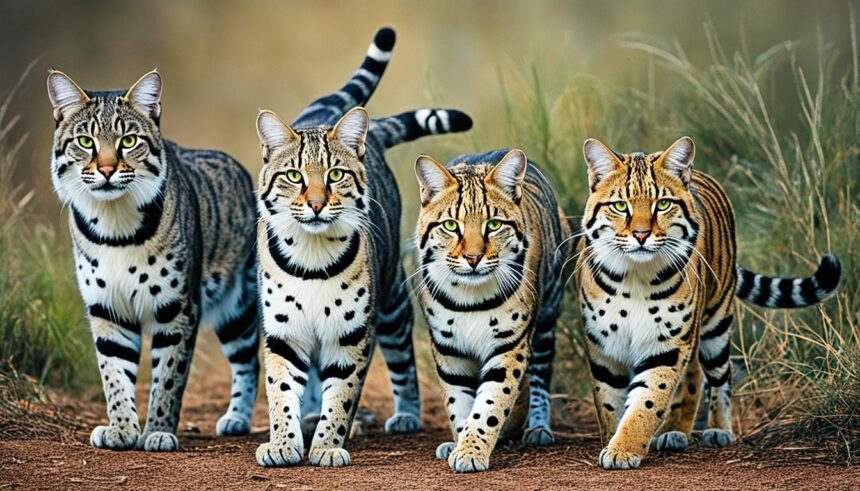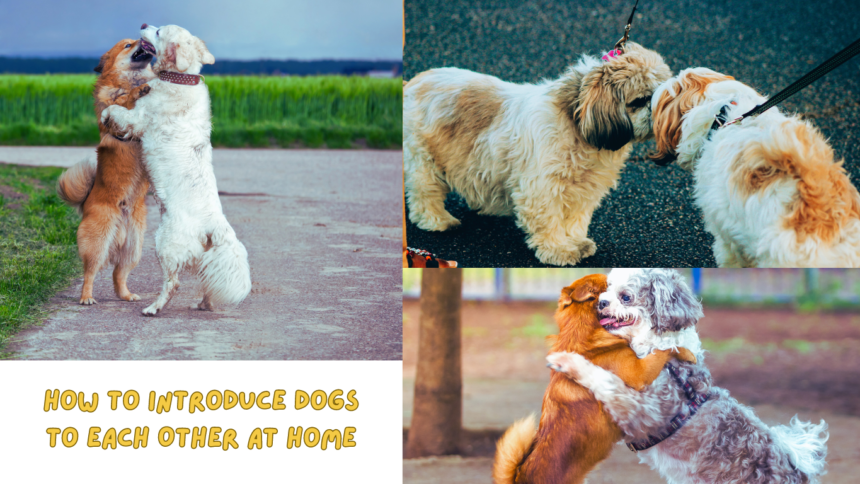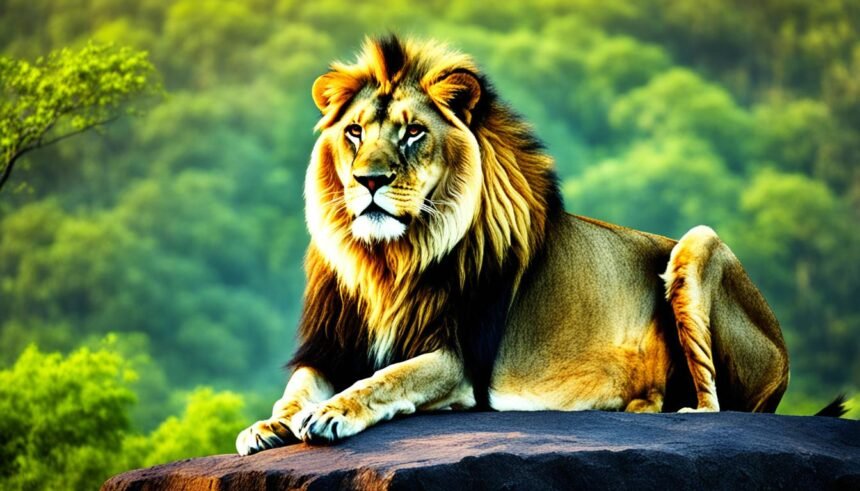The lion symbolizes strength and resilience, offering a fascinating look at life expectancy. Lion lifespan studies show a clear difference between wild and zoo lives. In the wild, lions live around 10 to 15 years, due to environmental and survival challenges.
Lions in the wild embody freedom. Yet, their lives are short, with numbers dropping by over 40% in recent times. Male lions, due to their tough roles in the pride, often live only 8 to 12 years.
Zoos offer a safer environment for lions, where they can live up to 30 years. Here, the oldest lions outlive their wild counterparts, showing how human care can extend their lives.
Predation and human threats significantly affect wild lion lifespan. However, lions in zoos face fewer dangers. This difference raises important questions about preserving these magnificent creatures for future generations.
Anatomy of the African Lion: Understanding the King of the Jungle
The African lion symbolizes both strength and royalty. They show majesty through their impressive physical traits. These lions are both powerful and graceful. They possess muscles, manes, and might, which all suit their role as top predators.
Defining Features of the African Lion
Lions have several distinct traits. They have muscular bodies and a deep chest, with a golden tan coat for camouflage. Their rounded heads and tufted tails are iconic. The essence of a lion lies in its physical anatomy.
The Majestic Mane: A Male Lion’s Crown
The male lion’s mane is well-known. It shows a lion’s health and strength, attracting females and scaring rivals. It also protects the lion’s neck and head during fights. The mane’s color and fullness indicate the lion’s fitness.
Physical Prowess: Size and Strength Across Genders
Male and female lions differ in size. Males can be up to 10 feet long and weigh 500 pounds. Females, however, are about 8 feet long and weigh up to 350 pounds. But lion strength comes not just from size. It also comes from their power, agility, and hunting tactics.
| Characteristic | Male Lion | Female Lion |
|---|---|---|
| Body Length | 9 to 10 feet | 7 to 8 feet |
| Weight | Up to 500 lbs | 270 to 350 lbs |
| Mane | Present, varying color/size | Absent |
| Strength | High, defensive role | Slightly lesser, hunting role |
The differences in size and strength show the roles within the pride. Males mainly protect the territory and pride. The agility and skill of the female lions are key in hunting. These traits help create the pride’s complex social structure. This structure helps them survive in the wild.
The Social Dynamics of Lion Prides
Learning about social structure of lions helps us appreciate their complex world. Lion prides are sophisticated social groups that help them survive. A pride usually has 2 to 9 adult lionesses, 2 to 6 adult males, along with cubs and subadults. On average, a pride has about 15 lions.
Lion prides stay strong through their social bonds. These bonds help them in everything they do, from hunting together to protecting their young. The males are especially important for guarding their home from outsiders.
Since 1990, around 800 lions have been moved to help keep their groups healthy, especially in fenced areas in South Africa. This shows how important it is to keep their families and genes diverse.
Being close to each other is key for lions, not just in everyday life but also when they’re moved or reintroduced to the wild. Experts use Social Network Analysis (SNA) to understand their social lives better. This helps us know how they work together and support each other.
- Lions in Southern Africa are vulnerable, needing ongoing protection.
- White lions are being reintroduced, showing lions can adapt under good care.
- Half of the lion cubs don’t make it through the first year, highlighting nature’s harshness.
Lion numbers have dropped by about 43% since the 1990s, making it critical to help and protect them. They’re considered ‘Vulnerable’ by experts. Recognizing only two lion subspecies shows we need to understand their genes even better. Recent DNA studies have found different lion family lines, especially in Central Africa.
| Year | Conservation Initiative | Impact |
|---|---|---|
| 1996-Present | Listed as Vulnerable on IUCN Red List | Lion populations in decline |
| 2006 | Reintroduction of white lions | Revival of an absent subspecies |
| 1990-2013 | Translocations within SA reserves | Approx. 800 lions translocated, promoting genetic diversity |
| 2017 | Revision of lion taxonomy | Recognition of two main subspecies |
Fossil records and genetic data show us a long history of lion families. This includes P. l. sinhaleyus and others, proving today’s lions carry a big legacy. Their determination to survive, like bringing back the white lions, shows their strong will and how they rely on each other.
Prey and Hunting Strategies in the Wild

It’s important to understand how lions feed and hunt to appreciate them fully. Their diet consists only of meat, coming from different animals they catch. This diet supports their big size and strength.
The Carnivorous Diet: Diverse Prey for the Apex Predator
Lions eat a variety of large animals, like buffalo and zebra. They show a preference for prey that gives them lots of energy. Males can weigh up to 190kg and females 126kg. They can eat up to 40kg in one meal, showing their big need for meat.
Teamwork in the Pride: Lionesses Lead the Hunt
Lionesses work together with great cooperation and skill. They use stealth and speed to catch their prey. This team effort is crucial for their survival, especially as their homes have shrunk. Now, only 8% of their original living space remains, due to humans and illegal hunting.
Scavenging and Stealing: Opportunistic Feeding Habits
Lions also scavenge and steal from other animals when they can. This shows they’re good at adapting. Over half of lions in unprotected areas will do this. This often leads to difficult times with humans and livestock.
With lion numbers dropping by 43% in two decades, we see the effects of less prey, lost habitats, and human conflicts. Protecting lions is critical. Their survival depends on their environment and available prey.
Lion Reproduction and Cub Rearing
The life cycle of lions is captivating. It involves lion reproduction and cub rearing. These are vital for the survival of this splendid species. Knowing about them helps in conserving lions in the wild.
African lions are notably larger than Asiatic lions. They grow larger, with males ready to mate around two years old. But they usually wait until they’re 4 or 5 to breed. Female lions, key to the pride’s future, give birth at about the same age. This comes after a 102 to 113 days of being pregnant. The arrival of cubs marks a significant point in the pride’s history.
- Common litter size: Two to four cubs, with a range from one to six.
- Frequency of breeding: Lions typically breed no more than once every two years.
- Cub rearing: Lionesses raise their young within the pride, teaching necessary survival skills over several months.
- Cub mortality rate: High, with some areas like the Serengeti experiencing an 86 percent mortality rate.
Lion cubs are born weak and need much care. Growing up is tough due to dangers from within their species and from outside. The current state of lion populations shows how vital it is to understand their reproduction and cub rearing.
| Characteristic | African Lion | Asiatic Lion |
|---|---|---|
| Size (Length from head to tail) | 9 to 10 feet (3 meters) | 6.6 to 9.2 feet (2 to 2.8 meters) |
| Weight | 330 to 550 pounds (150 to 250 kilograms) | 242 to 418 pounds (110 to 190 kilograms) |
| Mane appearance | Larger and more magnificent | Smaller and less dense |
| Distinct features | Rarer skin folds and tufts | Loose skin, shaggier coats, and longer tassels |
| Survival to maturity (Male) | About 1 in 8 | Data not specified |
| Global population | Approx. 20,000 | Approx. 500 (Gir National Park) |
In summary, lion reproduction and cub rearing are full of obstacles but are natural wonders. With the right conservation work for African and Asiatic lions, we can ensure lions’ roars continue to echo in the wild for years to come.
Exploring Lion Habitats: From Savannas to Grasslands
In Africa, lions roam vast lands, from savannas to grasslands that define the continent’s ecosystems. Shockingly, lions have disappeared from 94% of their original area. Now, fewer than 25,000 remain in Africa. Their decreasing numbers have raised serious concerns for conservation, highlighted by their vulnerable status by the IUCN.
Lion populations have dropped by over 40% recently, showing the urgent need for action. In Botswana’s Selinda reserve, efforts have shown that lions can rebound with proper conservation. This success story highlights the power of concerted conservation work.
Ranging Across Africa: Where Wild Lions Roam
African plains and woods, where lions once thrived, are changing due to human and environmental pressures. The decrease in large herbivores, lions’ main prey, by up to 85% dramatically affects them. Additionally, trophy hunting and human-wildlife conflicts shrink lions’ living spaces, making survival harder.
Surviving in the Gir Forest: Challenges for Asiatic Lions
In India’s Gir Forest, the Asiatic lion faces unique challenges. With just around 674 left, according to 2020 estimates, their situation is critical. Habitat loss and fragmentation threaten these lions, underscoring the need for focused conservation to save this subspecies.
| African Lion | Asiatic Lion | |
|---|---|---|
| Current Estimated Population | ~674 | |
| Conservation Status | Vulnerable | Endangered |
| Habitat Decline | 94% Loss | Significant Fragmentation |
| Key Initiatives | Translocation, Compensating Losses | Habitat Preservation, Conflict Mitigation |
With strong conservation plans, like translocations in Mozambique’s Zambezi Delta and community support, there’s hope for lions. These icons of the wild symbolize nature’s resilience. We must work to see them thrive in their natural habitats, witnessing them as kings of the savannas and forests for future generations.
Challenges to Longevity: Risks Lions Face in the Wild
Lions in the wild face many dangers that threaten their survival. Lion lifespan challenges include human activities like land development and poaching. Natural threats like predation and competition are also big problems.
- An adult male lion might live up to 12 years; female longevity surpasses this, potentially living up to 19 years.
- Starkly, half of lion cubs meet their demise before their second birthday, highlighting the vulnerability of the young.
- Social structures like coalitions play a pivotal role; male lions united in coalitions, particularly those in numbers of three or more, boast higher rates of progeny survival and success in commanding prides.
- Infanticide emerges as a grim reality; new male coalitions may resort to killing cubs to establish their dominance over a pride.
Lions are unique among cats because they rely on each other. They work together to hunt big prey and protect their cubs. In the vast Serengeti, where animals move across 5,700 square miles, this teamwork is key. We are still learning about lion societies, especially in well-studied areas like the Serengeti.
In the end, saving lions means adopting ongoing, caring conservation efforts. Our goal is to keep the ‘King of the Jungle’ roaring in their natural homes.
The Lion’s Roar: Communication in the Pride
In the vast savanna, a lion’s roar echoes loudly. It shows the lion’s power and the pride’s way of talking to each other. Lions use different sounds to share feelings, keep the group together, and show they own the land.
Marking Territory and Presence: The Roar as a Messenger
The roar of a lion marks its territory. This deep sound warns others and shows where the pride lives. It tells of the lion’s strength and the pride’s unity. Their roar keeps their home safe, which is key as lions need protected places to survive.
Social Cohesion: Roaring as a Way to Keep the Pride Together
Roars also help lions stay close to each other. When they roar together, it’s like they’re singing a song of unity. This makes their bonds stronger, which is important for the pride’s survival. It’s a way for the pride to feel connected and strong together.
| Aspect of Lion Communication | Description |
|---|---|
| Lion Roar | A roar can convey territorial presence and deter competitors. |
| Lion Vocalizations | Various sounds, including growls and grunts, are used for close-range communication. |
| Pride Cohesion | Group roaring reinforces social bonds and organizational structure within the pride. |
| Communication Function | Essential for marking territory, expressing social hierarchy, and maintaining group unity. |
The way lions communicate is key to keeping their families together. It shows their evolution and survival skills. With lions facing threats, understanding their way of talking is critical. We must protect these communication patterns to keep lions thriving for future generations.
Lion Lifespan: How Long Do Lions Live in the Wild?
Understanding the lion lifespan in the wild reveals the harsh realities they face. The journey of a wild lion’s life is not only fascinating but also demonstrates the struggle for survival in nature. It shows how survival in the wild is a delicate balance.
Lions start life with high risks. By the first year, one in two male lions die, often due to fights with adult males. This dangerous start is vital to understand.
Young lions face threats from other lions, predators, and environmental dangers. Challenges like snakebites and hyenas are common. They also risk being killed by adult males, making their first year extremely risky.
| Age | Challenges | Survival Rate |
|---|---|---|
| Birth to 1 Year | Infanticide, Predation, Environmental Hazards | 50% |
| 3 Years | Nomadic Lifestyle, Territorial Disputes | Varies |
| Adulthood | Mating Rivals, Human Threats, Protection of Coalition | Depends on Coalition Strength |
By 3 years of age, surviving males leave their pride and wander alone. They often encounter danger from other lions. Many don’t survive this tough period.
If they make it, their coalitions’ size matters a lot. Larger groups have better survival rates. They secure territories and mates more effectively, reducing deadly fights.
Humans also pose a big threat to lions. Poaching, protection killings, and traps meant for other animals endanger them. These add to their survival challenges.
A stable lion population has about two females for every male. This ratio helps keep the pride strong despite male lions’ high death rates. It ensures the survival and health of the species.
In summary, the wild lion lifespan showcases their challenging life and resilience. Supporting conservation efforts can help protect these majestic animals for future generations.
Human Impact and Conservation Efforts for Lion Populations
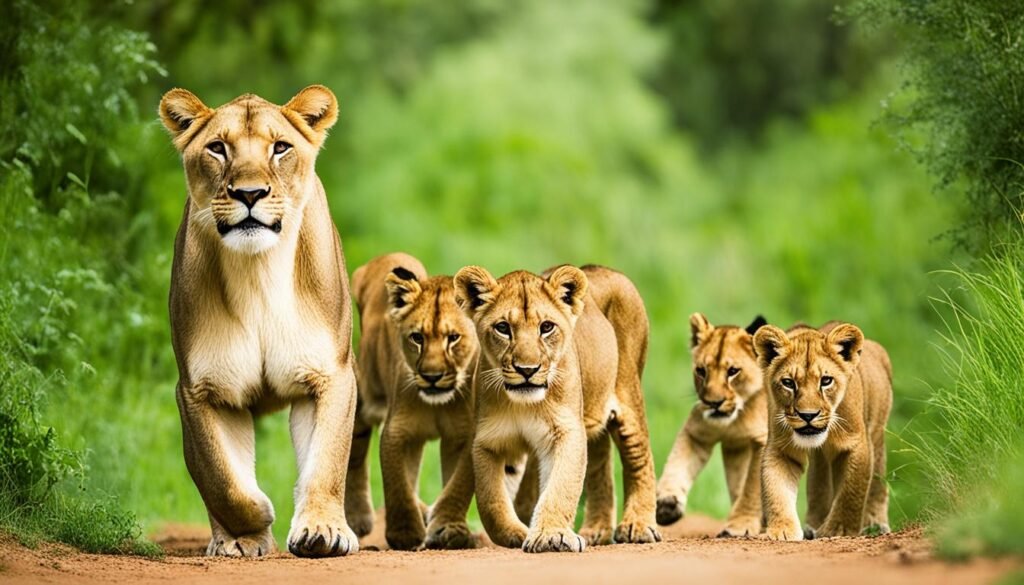
The majestic lion symbolizes strength and courage but faces great risks from humans. Once widespread, lions now see their numbers falling due to human impact on lions, highlighted by habitat loss and fragmentation. This dire situation for these big cats calls for immediate lion conservation efforts.
Habitat Loss and Fragmentation: A Barrier to Survival
Over the years, lands that lions called home have greatly reduced. Now, these lands are broken into small, isolated patches. This habitat loss and fragmentation squeezes lion populations into smaller areas. It also hinders their genetic diversity, vital for survival.
Conflict and the Illegal Wildlife Trade: Threats to Lions
As humans expand into lion territories, conflicts increase. When lions attack livestock, people often kill lions in retaliation. This poses a big problem for their conservation. Besides, the illegal wildlife trade threatens lions, with their parts trafficked for medicine and trophies.
Protecting the Pride: How Conservationists are Responding
Conservation organizations for lions are fighting these challenges with new strategies. They’re using community efforts, anti-poaching teams, and educational programs. These efforts aim to reduce human-lion conflicts and promote living together peacefully. They’re working hard to protect lions everywhere.
| Year | Study Focus | Key Findings |
|---|---|---|
| 2003-2016 | Human-lion conflict perspectives and management | Various studies underscore the complexities of human-carnivore coexistence, with insights into attitudes and conflict mitigation strategies worldwide. |
| 2004 & 2008 | Livestock predation on ranches | Important data was collected from areas surrounding Tsavo National Park and Tanzania’s Maasai steppe, highlighting predation patterns and community impacts. |
| 2009 & 2010 | Conservation interventions and population management | Studies in Kenya assessed the decline in lion numbers and the impact of incentive-based management, advocating for community-centric conservation efforts. |
| Ecological & Socio-political Fragility | Regional lion population assessment | Maze National Park and areas in Somalia have the highest fragility scores, indicating the urgent necessity for stabilization in these regions. |
| Population Statistics | Lion population sizes and protected areas | With 62 identified populations, a significant number exist in areas with insufficient conservation measures, emphasizing the need for expansive habitat protection. |
Despite the worrying numbers, there’s still hope due to lion conservation efforts and global support. With lasting commitment and better protection, we can create a future where lions flourish in their natural homes, away from human threats.
Conclusion
Our exploration into lion life shows a powerful but vulnerable animal. This summary highlights their strength and their challenges. Surviving 10 to 14 years in the wild, lions face many tests. These include leading their pride and protecting their home, which can be huge.
Lions have complex social lives, often with about 15 members working together. They need large areas, up to 400 square kilometers, to live and hunt. Also, a male can eat up to 75 pounds of meat at once. Despite needing so much food, lions spend a lot of time resting. This saves energy for hunting and protecting their pride.
Understanding lions shows why we must work hard to protect them. They’re crucial for biodiversity and cultural symbols. To keep lions visible for future generations, we need ongoing conservation. Everyone must help create a world where lions can live peacefully. It’s our job to protect these symbols of the wild. They play a key role in the health of our planet.
FAQ
How long do lions live in the wild?
Lions in the wild have an average lifespan of 10 to 14 years.
What are the defining features of the African lion?
The African lion is known for its muscular body, golden tan coat, and rounded head. It also has round ears and hairy tufts at the end of its tail.
What is the purpose of a male lion’s mane?
The mane makes males look more impressive to females and frightening to other males. It helps protect them during fights too.
How big and strong are lions?
Adult male lions can grow up to 9 to 10 feet and weigh up to 500 pounds. Females grow up to 7 to 8 feet and weigh between 270 and 350 pounds.
How do lion prides function?
Lion prides usually have 3 to 30 lions. This includes lionesses, their cubs, and a few unrelated males. They hunt and raise cubs together.
What do lions eat?
Lions mainly eat animals like antelopes, zebras, and wildebeest. They also scavenge or steal prey when they can.
How do lionesses hunt?
Lionesses are the main hunters. They use teamwork and stealth to catch large prey.
How do lions reproduce and raise their cubs?
Lions can have babies any time of the year. After a gestation of 102-113 days, they give birth to 1-6 cubs. Cubs are raised in the pride.
Where do lions live in the wild?
Lions live in savannas, grasslands, and forests in Africa. There’s also a group of Asiatic lions in India’s Gir Forest.
What are the challenges faced by lions in the wild?
Lions face starvation, disease, attacks by other animals, and threats from humans. These include hunting and losing their homes.
How do lions communicate with each other?
Lions communicate by roaring. This sound marks their territory and keeps the pride close.
What are the main human impacts on lion populations?
Humans cause habitat loss, conflicts, and illegal wildlife trade. Protecting lions is key to their survival.

